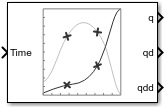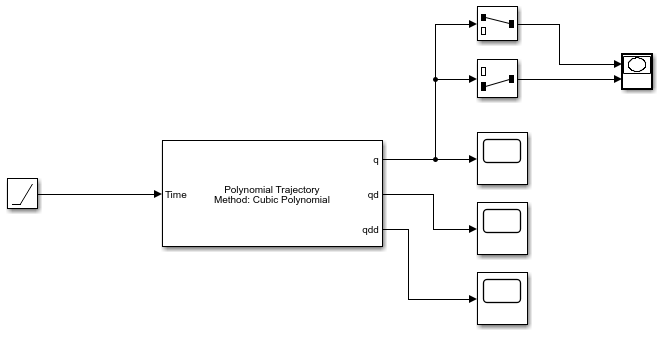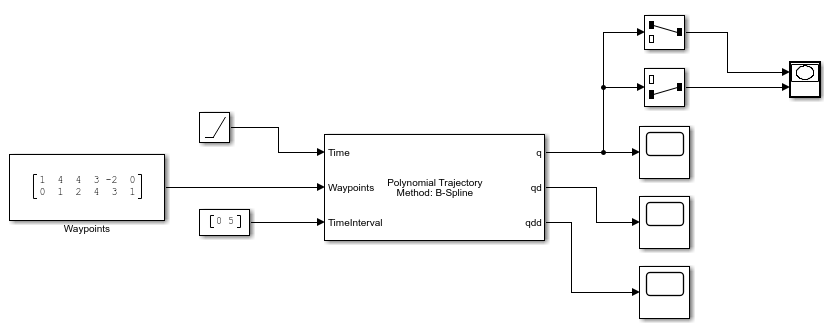Polynomial Trajectory
Generate polynomial trajectories through waypoints
Libraries:
Robotics System Toolbox /
Utilities
Description
The Polynomial Trajectory block generates trajectories to travel through waypoints at the given time points using either cubic, quintic, or B-spline polynomials. The block outputs positions, velocities, and accelerations for achieving this trajectory based on the Time input. For B-spline polynomials, the waypoints actually define the control points for the convex hull of the B-spline instead of the actual waypoints, but the first and last waypoint are still met.
The initial and final values are held constant outside the time period defined in Time points.
Examples
Ports
Input
Output
Parameters
Tips
For better performance, consider these options:
Minimize the number of waypoint or parameter changes.
Set the Waypoint source parameter to
Internal.Set the Simulate using parameter to
Code generation. For more information, see Interpreted Execution vs. Code Generation (Simulink).
References
[1] Farin, Gerald E. Curves and Surfaces for Computer Aided Geometric Design: A Practical Guide. San Diego, CA: Academic Press, 1993.
Extended Capabilities
Version History
Introduced in R2019a


